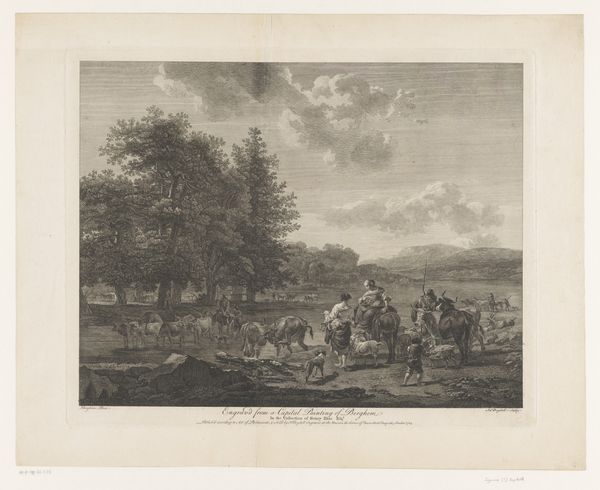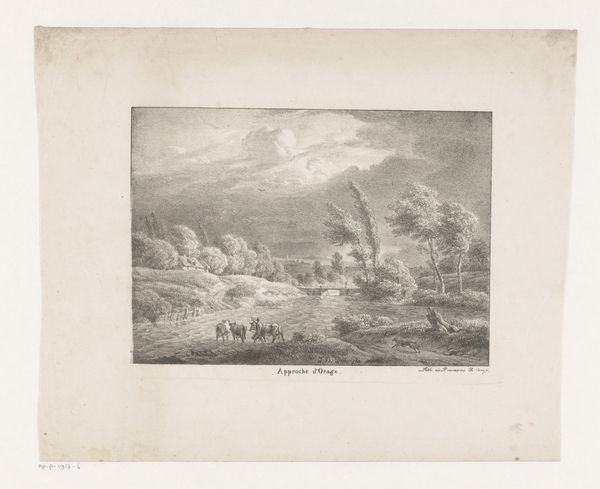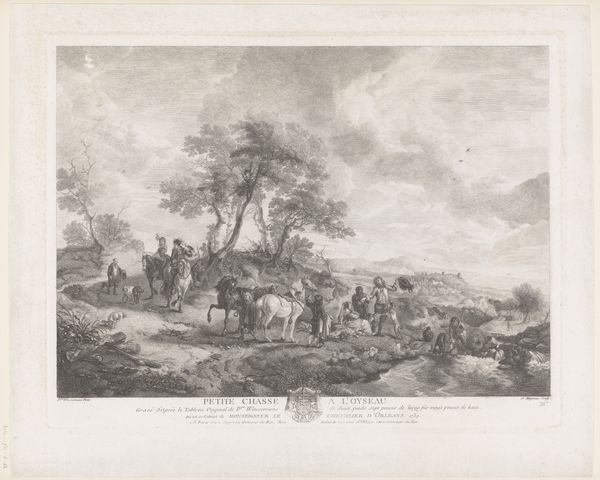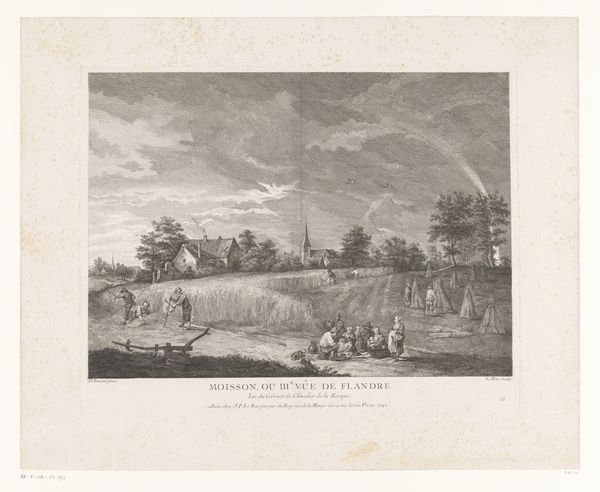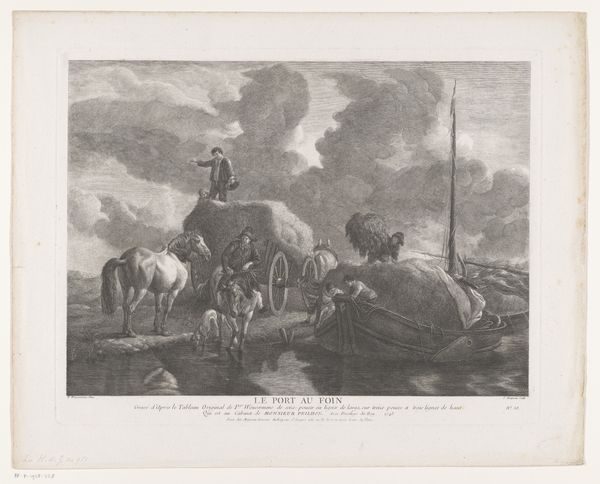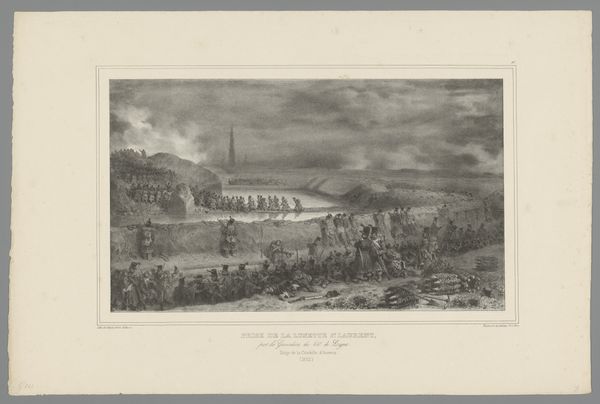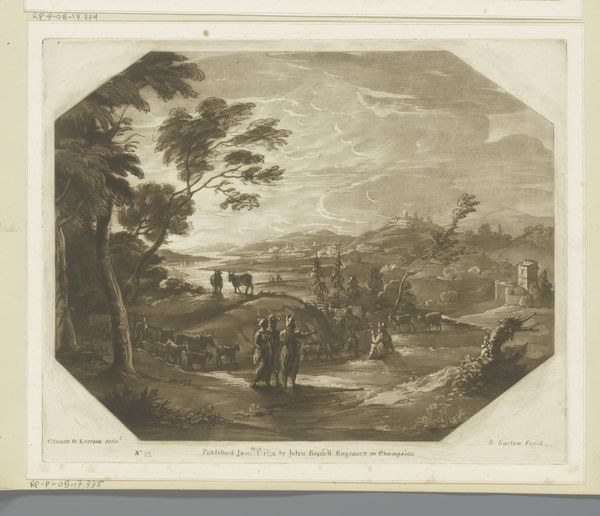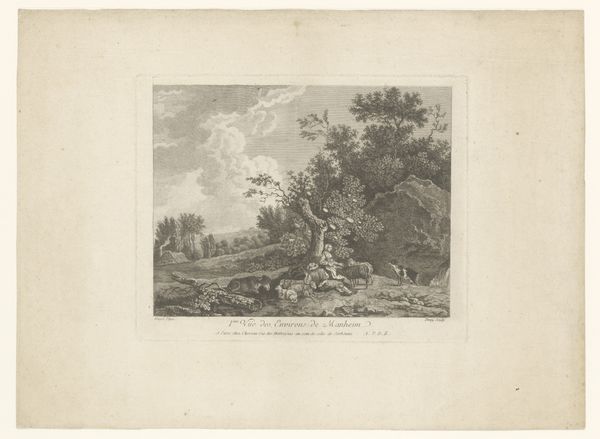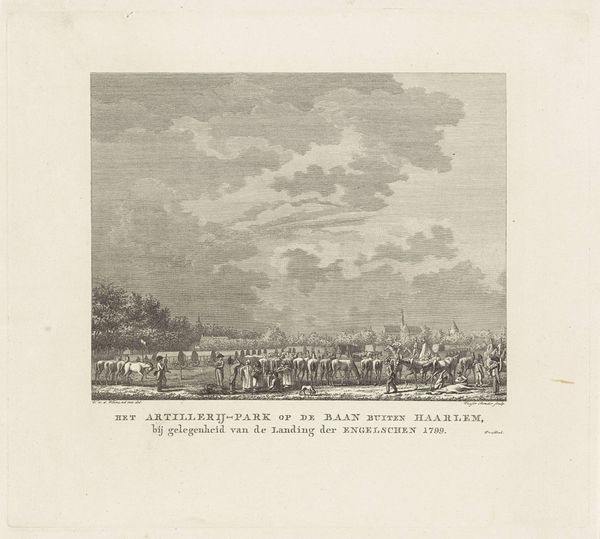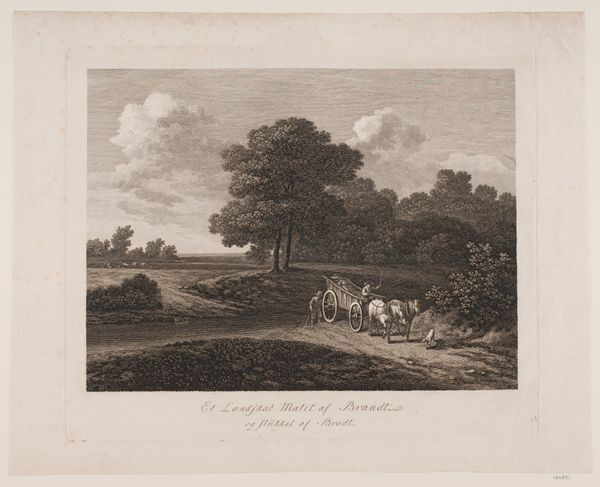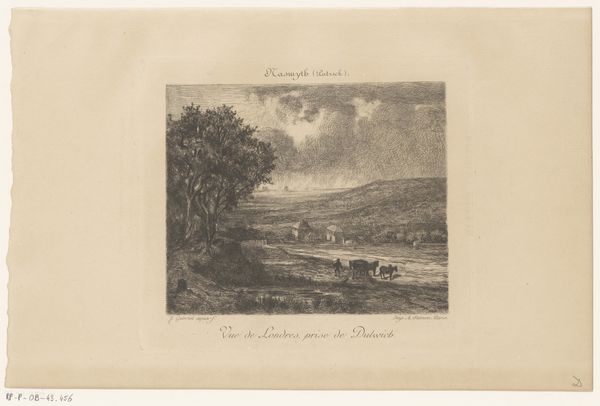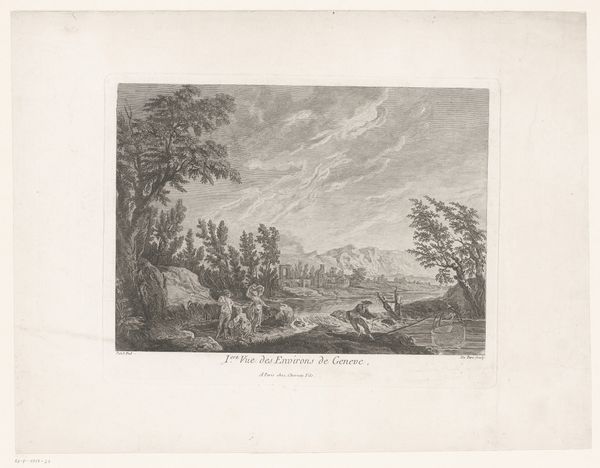
print, engraving
#
baroque
# print
#
landscape
#
genre-painting
#
engraving
Dimensions: height 354 mm, width 327 mm
Copyright: Rijks Museum: Open Domain
Editor: Here we have Jean Moyreau's "Eendenjacht," which translates to "Duck Hunt," a print made sometime between 1733 and 1762. The hazy, almost dreamlike quality of the scene strikes me. The composition guides my eye through the landscape to the hunters in the background. What do you see in this piece? Curator: I’m immediately drawn to the symbolism inherent in the act of hunting, particularly the representation of nature and humankind’s dominion over it. The subdued, almost melancholy tone suggests more than just a simple hunting scene. It evokes cultural memory around land use and status. Consider the dog—what does the breed suggest to you? Editor: I hadn’t considered the dog. Perhaps it signals the wealth and leisure associated with hunting as a sport, rather than a necessity? Curator: Precisely. The presence of specific animal breeds and hunting customs are powerful symbols within aristocratic culture. We must also remember the etymology of "landscape"—initially referring to a human-made administrative division. How might that affect our reading of the piece? Editor: That's a fascinating point! It makes me wonder about the boundaries being depicted – are they purely geographical, or are they also hinting at social and economic divides? Curator: Yes, the image becomes a carefully constructed stage for displaying power dynamics. Look at how the artist renders the cloudscape. What visual traditions might Moyreau be referencing with such evocative natural features? Editor: I think that viewing it in terms of symbolic gestures sheds light on how the seemingly pastoral scene has so much loaded social information packed in. Curator: Indeed, symbols speak across generations, embedding complex social information within images.
Comments
No comments
Be the first to comment and join the conversation on the ultimate creative platform.
